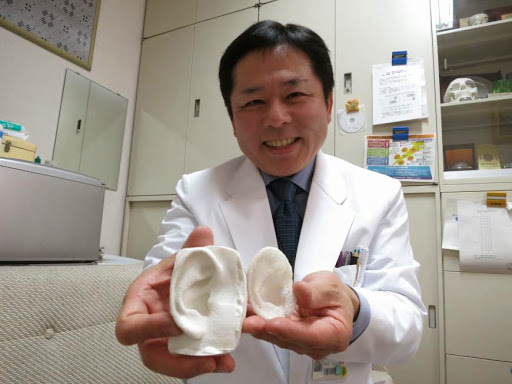Build Your Own House for $5,000 Using a 3D Printer
Is it that the Chinese seem to be able to things faster and cheaper most of the time or is it that 3D printers are just that amazing? Because they used a 3D printer to make a home in China! No, this isn’t a tall story; they really did ‘print’ a house in China. It would seem that there is no limit to what we can now do with 3D printers; currently some amazing developments are ongoing in the printing industry particularly in the Asia Pacific region.
Last year, the BBC had reported that architects in Amsterdam would build a full sized 3D printed house. The idea was to build an eco friendly dwelling space that is waste free; which could be the prototype for homes and cities of the future. The plastic used for creating this dwelling is heavily plant oil based. So perhaps in the near future we may be living in homes built not from conventional materials like bricks and mortar, but these new sustainable, renewable materials.
The Chinese 3D Building
While the Dutch are working on their 3d printed dwelling, a Chinese company, WinSun has actually created a five storey apartment building using their proprietary 3D printer. This is a 1,100 square meter (or 11,840 sq. ft) dwelling space including decorative accents and is currently on display at the China–Singapore Suzhou Industrial Park in Suzhou.
And this isn’t the first either – apparently WinSun Decoration Design Engineering has already performed the seemingly impossible feat of constructing 10 single storey dwelling spaces in a space of 24 hours. This project was presented as a solution to the problem of housing in Chinese villages. These dwellings present a cheap, efficient, modernized option. The video below shows you the type of living space that was created and the giant 3D printer that actually created it.
So how do they ‘print’ a house?
If you use a common or garden variety of printer and cartridge to print documents and photos, it can be a little difficult to get your head around the idea of printing actual objects. The idea that a printer can make objects that we can hold, feel and use; and now apparently live in is admittedly a little difficult to grasp.
If the Dutch company is going to use plant oil based materials, the Chinese company has used a mixture of industrial waste, ground construction and quick drying cement along with a hardening agent. This mixture is extruded layer upon layer – think icing a cake – to make walls, ceilings, doors, windows and so on. A CAD design template is used to create the dwelling design and to send instructions to the printer.
3D printer inventor Ma Yihe has created this giant printer which is 6.6 meters tall, 40 m long and 10 m wide. This makes huge prefabricated blocks which are segments of the building to be made. These prefabricated pieces are then assembled on site to form a dwelling space, much like a child’s Lego blocks.
3D printing – How the Future Looks
Imagine the possibilities here: cheap housing for the masses, more people able to buy their own homes, a solution for environmental challenges thrown up by traditional construction techniques and even an eco friendly solution to deal with construction waste – That mythical $5000 home is closer than you think!
If and when these processes are mainstreamed and made commercially viable, you can actually think about building your own cheap house or creating an adjunct to the main dwelling perhaps – an extra guest room, shed, gazebo or similar.
 |
|---|
| Tsuyoshi Takato, a professor of tissue engineering at the University of Tokyo School of Medicine, shows ear models. |
Look at how Japanese regenerative medicine is using 3D print technology to regenerate human tissue. It is going to be possible to print micro caliber blood vessels and to grow heart muscles using stem cell sheets. Imagine the possibilities now that it is possible, at least in theory, to recreate cartilages, blood vessels and so on. Seniors with degenerative conditions, children with congenital malformations and accident victims could all benefit hugely.
It’s all rather like our collective, fantastic sci-fi imaginings being brought to life, wouldn’t you say? If you have a view to share, feel free to express yourself in our comments segment or via our Facebook and Twitter pages. And don’t forget to subscribe to our weekly newsletter for more interesting stories.

